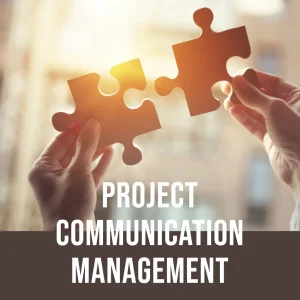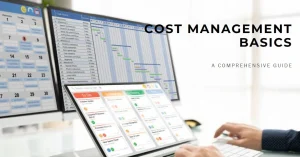I. Introduction
Hello, fellow program management enthusiasts! If you’re reading this, you’re probably eager to enhance your skills and bring your program management expertise to the next level. As someone who has been in the field for years, I know how crucial it is to stay on top of the latest strategies and best practices. That’s why today, I’m excited to share with you the three key concepts that every program manager should master for successful program management.
Program management is the art and science of orchestrating multiple related projects to achieve strategic objectives and deliver value to organizations. It’s a dynamic field that requires not only technical prowess but also strong leadership, communication, and problem-solving skills. Trust me, the satisfaction you get from seeing all the pieces fall into place and knowing that you’ve helped shape the future of your organization is second to none!
As a program manager, your ability to grasp these three core concepts will significantly impact your program’s success. So, are you ready to dive in? I guarantee that by the end of this article, you’ll have a deeper understanding of program governance, benefits management, and stakeholder engagement, and you’ll be ready to take your program management game to new heights! Let’s get started!
II. Key Concept 1: Program Governance
First things first, let’s talk about program governance. This might sound like a fancy term, but trust me, it’s the backbone of successful program management. I like to think of program governance as the “rules of the game” that help ensure the program runs smoothly, stays aligned with organizational goals, and delivers expected outcomes.
A. Define program governance
Program governance is the framework that defines how decisions are made, who makes them, and the processes and policies that guide the overall management and execution of the program. It’s the secret sauce that keeps everything in check, ensuring that your program stays on track and achieves its objectives.
B. Importance of program governance in program management
Imagine playing a game without any rules or guidelines. Chaos, right? The same goes for managing a program without proper governance. Establishing a strong governance structure is vital for mitigating risks, maintaining accountability, and ensuring that the right decisions are made at the right time. It’s like having a compass to guide your program through the complex landscape of multiple projects and stakeholders.
C. Key components of program governance
To set up an effective program governance framework, you’ll want to consider these key components:
- Roles and responsibilities: Clearly define the roles of everyone involved in the program, from the program manager to the project managers, sponsors, and even the stakeholders. This way, everyone knows their part and can work together seamlessly.
- Policies and procedures: Develop policies and procedures that outline how the program will be managed, including the decision-making process, risk management, and resource allocation. This ensures that everyone is on the same page and that the program operates consistently and predictably.
- Decision-making processes: Establish a clear decision-making process that outlines who makes decisions, how they’re made, and when they need to be made. This helps prevent decision-making bottlenecks and keeps the program moving forward.
- Performance measurement: Set up a system for tracking and evaluating the program’s progress and performance against its objectives. This allows you to make data-driven decisions and continuously improve your program.
D. Best practices for establishing effective program governance
Establishing an effective program governance framework can be challenging, but it’s well worth the effort. Here are a few best practices I’ve learned along the way:
- Keep it simple: Overcomplicated governance structures can be a headache to navigate. Aim for simplicity and clarity when designing your framework.
- Involve stakeholders: Engage key stakeholders in the development of your program governance framework to ensure that their perspectives and concerns are addressed.
- Be flexible: Your governance framework should be able to adapt to changes in your organization or the program itself. Stay open to refining and adjusting your approach as needed.
- Communicate clearly: Regularly communicate the governance structure, roles, and responsibilities to all team members to avoid confusion and ensure everyone understands their role.
Now that you’re familiar with program governance, it’s time to explore the second key concept: benefits management. Let’s keep the momentum going!
III. Key Concept 2: Benefits Management
Next up on our journey to program management mastery is benefits management. If you’re anything like me, you’re passionate about delivering tangible value to your organization through your programs. That’s where benefits management comes in, helping you not only identify and prioritize benefits but also track and measure them to ensure your program is making a real impact.
A. Define benefits management
Benefits management is the process of identifying, planning, tracking, and realizing the benefits that a program delivers to an organization. It’s all about making sure that the program’s outcomes contribute positively to the organization’s strategic objectives and create value.
B. Importance of benefits management in program management
As a program manager, it’s essential to demonstrate the value of your program to your organization. Benefits management helps you stay focused on delivering the desired outcomes and ensures that your program’s resources are allocated effectively. By keeping an eye on the benefits, you’ll be able to make informed decisions, maximize the program’s value, and ultimately, prove the worth of your program to stakeholders.
C. Steps for effective benefits management
Ready to up your benefits management game? Here are the four essential steps to follow:
- Identifying benefits: Start by listing all the potential benefits that your program could deliver, both tangible and intangible. Consult with stakeholders and review your organization’s strategic objectives to ensure you’re on the right track.
- Prioritizing benefits: Not all benefits are created equal. Assess each potential benefit’s significance, feasibility, and alignment with your organization’s goals. Then, prioritize them based on their overall value and impact.
- Realizing benefits: Develop a benefits realization plan that outlines how and when each benefit will be achieved. This should include the necessary steps, resources, and responsibilities required to bring the benefits to life.
- Tracking and measuring benefits: Regularly monitor and measure the progress of your benefits realization plan. This will enable you to make data-driven decisions and adjustments, ensuring that your program stays focused on delivering maximum value.
D. Challenges of benefits management and how to overcome them
Benefits management can be challenging, but don’t worry, I’ve got you covered. Here are some common challenges and tips on how to tackle them:
- Unclear benefits: If you’re struggling to define and quantify the benefits, collaborate with stakeholders to gain more insights and refine your understanding.
- Changing priorities: As your organization’s priorities evolve, your benefits may need to be reassessed. Stay flexible and be ready to adjust your benefits management approach as needed.
- Resistance from stakeholders: Some stakeholders might not see the value of your program or its benefits. Keep the lines of communication open, address their concerns, and demonstrate the impact of your program through data and success stories.
With benefits management under your belt, it’s time to move on to the final key concept: stakeholder engagement. Trust me, this one’s a game-changer!
IV. Key Concept 3: Stakeholder Engagement
We’ve made it to the final key concept, and it’s a big one: stakeholder engagement. If you’ve ever managed a program, you know that it’s not just about the nuts and bolts of project management. It’s about building strong relationships with the people who have a stake in your program’s success. Let’s dive into the world of stakeholder engagement and learn how to win their hearts and minds!
A. Define stakeholder engagement
Stakeholder engagement is the process of actively involving and communicating with individuals or groups who have an interest or influence in your program. These stakeholders can include sponsors, project teams, end-users, customers, and even regulatory authorities. Engaging with stakeholders helps you understand their needs and expectations, address concerns, and ultimately, create a collaborative environment for your program to thrive.
B. Importance of stakeholder engagement in program management
I cannot stress enough how important stakeholder engagement is for the success of your program. When stakeholders feel heard, understood, and involved, they’re more likely to support your program, contribute valuable insights, and help overcome challenges. On the flip side, ignoring or mismanaging stakeholder relationships can lead to resistance, miscommunication, and even program failure.
C. Key elements of successful stakeholder engagement
Ready to become a stakeholder engagement superstar? Here are the four key elements you’ll need to master:
- Identifying stakeholders: The first step is to create a comprehensive list of all the stakeholders involved in your program. Consider their roles, interests, and influence on the program’s outcomes.
- Understanding stakeholder needs and expectations: Put yourself in your stakeholders’ shoes and try to understand their motivations, concerns, and expectations. Conduct interviews, surveys, or workshops to gather valuable insights and build a solid foundation for your stakeholder relationships.
- Communicating with stakeholders: Open and transparent communication is crucial for successful stakeholder engagement. Keep stakeholders informed about program progress, challenges, and decision-making processes. Tailor your communication methods and frequency to meet each stakeholder’s preferences and needs.
- Managing stakeholder relationships: Foster strong relationships by addressing stakeholder concerns, involving them in decision-making processes, and celebrating program milestones together. Remember, stakeholder engagement is an ongoing process that requires continuous effort and attention.
D. Tips for effective stakeholder engagement
Before we wrap up, let me share some tried-and-true tips for effective stakeholder engagement:
- Be proactive: Don’t wait for stakeholders to come to you. Take the initiative to engage with them regularly and keep them informed.
- Listen actively: Show genuine interest in stakeholders’ opinions and feedback. Acknowledge their concerns and demonstrate empathy.
- Be transparent: Share both the successes and challenges of your program. Honesty and openness build trust and credibility.
- Adapt your approach: Recognize that each stakeholder is unique and may require a different engagement approach. Be flexible and willing to adjust your tactics as needed.
Congratulations! You’ve now unlocked the secrets of program governance, benefits management, and stakeholder engagement. Let’s bring it all together in the conclusion.
V. Conclusion
Wow, what a journey we’ve been on together! As we wrap up, let’s take a moment to recap the three key concepts of program management we’ve explored today:
- Program Governance: The framework that keeps your program on track, ensuring accountability, alignment with organizational goals, and effective decision-making.
- Benefits Management: The process of identifying, prioritizing, realizing, and tracking the benefits your program delivers, helping you maximize value and demonstrate your program’s worth.
- Stakeholder Engagement: The art of building strong relationships with the people who have an interest in your program’s success, fostering collaboration and support.
By mastering these three core concepts, you’ll be well-equipped to navigate the complexities of program management and drive your programs to success. But remember, program management is an ongoing learning experience. Stay curious, keep growing, and continue to refine your skills.
I hope this article has inspired you to take your program management expertise to the next level. As a fellow program manager, I know how rewarding it can be to see your programs come to life and deliver real value to your organization. So, go forth and conquer, and may your programs be the shining examples of success that others aspire to emulate!
Happy program managing, and until next time!
To find out how Artificial Intelligence is changing the Project Management landscape, you have enjoy reading this article https://www.shaunstoltz.com/did-artificial-intelligence-just-change-everything-about-project-management/
Find out more about Shaun Stoltz https://www.shaunstoltz.com/about/
This post was written by an AI and reviewed/edited by a human.



